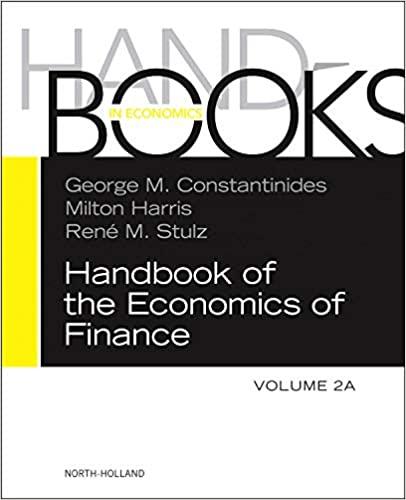

Question 2 (20 marks) ABC Company treats dividends as a residual decision. It expects to generate $3 million in net earnings after taxes in the coming year. The company has an all-equity capital structure, and its cost of equity capital is 15 percent. The company treats this cost as the opportunity cost of internal equity financing (retained earnings). Because of flotation costs and underpricing, external equity financing issue of new common stock) is not relied on until internal equity financing is exhausted. a) How much in dividends (out of the $3 million in earnings) should be paid if the company has $2.05 million in projects whose expected returns exceed 15 percent? (4 marks) b) How much in dividends should be paid if it has $3 million in projects whose expected returns exceed 15 percent? (3 marks) c) How much in dividends should be paid if it has $4 million in projects whose expected returns exceed 30 percent? (3 marks) What else should be done? (2 marks) Dividend payout is one way of distributing the value a firm has created. There is, however, confusion among some investors about whether, and how, dividend policy affects firm value. d) MM argue that dividend policy does not matter in a perfect capital market. What is the key reason behind this dividend policy irrelevancy argument? Name one important implication of the dividend policy irrelevancy argument. (4 marks) e) Name and briefly explain 4 real-world factors that may affect investors' or firms preference for different dividend payout policies, (4 marks) Question 2 (20 marks) ABC Company treats dividends as a residual decision. It expects to generate $3 million in net earnings after taxes in the coming year. The company has an all-equity capital structure, and its cost of equity capital is 15 percent. The company treats this cost as the opportunity cost of internal equity financing (retained earnings). Because of flotation costs and underpricing, external equity financing issue of new common stock) is not relied on until internal equity financing is exhausted. a) How much in dividends (out of the $3 million in earnings) should be paid if the company has $2.05 million in projects whose expected returns exceed 15 percent? (4 marks) b) How much in dividends should be paid if it has $3 million in projects whose expected returns exceed 15 percent? (3 marks) c) How much in dividends should be paid if it has $4 million in projects whose expected returns exceed 30 percent? (3 marks) What else should be done? (2 marks) Dividend payout is one way of distributing the value a firm has created. There is, however, confusion among some investors about whether, and how, dividend policy affects firm value. d) MM argue that dividend policy does not matter in a perfect capital market. What is the key reason behind this dividend policy irrelevancy argument? Name one important implication of the dividend policy irrelevancy argument. (4 marks) e) Name and briefly explain 4 real-world factors that may affect investors' or firms preference for different dividend payout policies, (4 marks)








